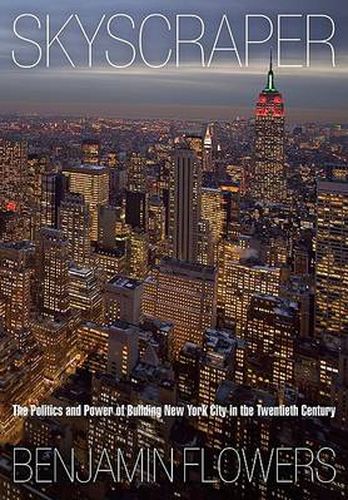Readings Newsletter
Become a Readings Member to make your shopping experience even easier.
Sign in or sign up for free!
You’re not far away from qualifying for FREE standard shipping within Australia
You’ve qualified for FREE standard shipping within Australia
The cart is loading…






Selected by Choice magazine as an Outstanding Academic Title
Nowhere in the world is there a greater concentration of significant skyscrapers than in New York City. And though this iconographic American building style has roots in Chicago, New York is where it has grown into such a powerful reflection of American commerce and culture.
In Skyscraper: The Politics and Power of Building New York City in the Twentieth Century, Benjamin Flowers explores the role of culture and ideology in shaping the construction of skyscrapers and the way wealth and power have operated to reshape the urban landscape. Flowers narrates this modern tale by closely examining the creation and reception of three significant sites: the Empire State Building, the Seagram Building, and the World Trade Center. He demonstrates how architects and their clients employed a diverse range of modernist styles to engage with and influence broader cultural themes in American society: immigration, the Cold War, and the rise of American global capitalism.
Skyscraper explores the various wider meanings associated with this architectural form as well as contemporary reactions to it across the critical spectrum. Employing a broad array of archival sources, such as corporate records, architects’ papers, newspaper ads, and political cartoons, Flowers examines the personal, political, cultural, and economic agendas that motivate architects and their clients to build ever higher. He depicts the American saga of commerce, wealth, and power in the twentieth century through their most visible symbol, the skyscraper.
$9.00 standard shipping within Australia
FREE standard shipping within Australia for orders over $100.00
Express & International shipping calculated at checkout
Selected by Choice magazine as an Outstanding Academic Title
Nowhere in the world is there a greater concentration of significant skyscrapers than in New York City. And though this iconographic American building style has roots in Chicago, New York is where it has grown into such a powerful reflection of American commerce and culture.
In Skyscraper: The Politics and Power of Building New York City in the Twentieth Century, Benjamin Flowers explores the role of culture and ideology in shaping the construction of skyscrapers and the way wealth and power have operated to reshape the urban landscape. Flowers narrates this modern tale by closely examining the creation and reception of three significant sites: the Empire State Building, the Seagram Building, and the World Trade Center. He demonstrates how architects and their clients employed a diverse range of modernist styles to engage with and influence broader cultural themes in American society: immigration, the Cold War, and the rise of American global capitalism.
Skyscraper explores the various wider meanings associated with this architectural form as well as contemporary reactions to it across the critical spectrum. Employing a broad array of archival sources, such as corporate records, architects’ papers, newspaper ads, and political cartoons, Flowers examines the personal, political, cultural, and economic agendas that motivate architects and their clients to build ever higher. He depicts the American saga of commerce, wealth, and power in the twentieth century through their most visible symbol, the skyscraper.